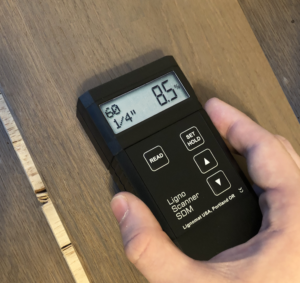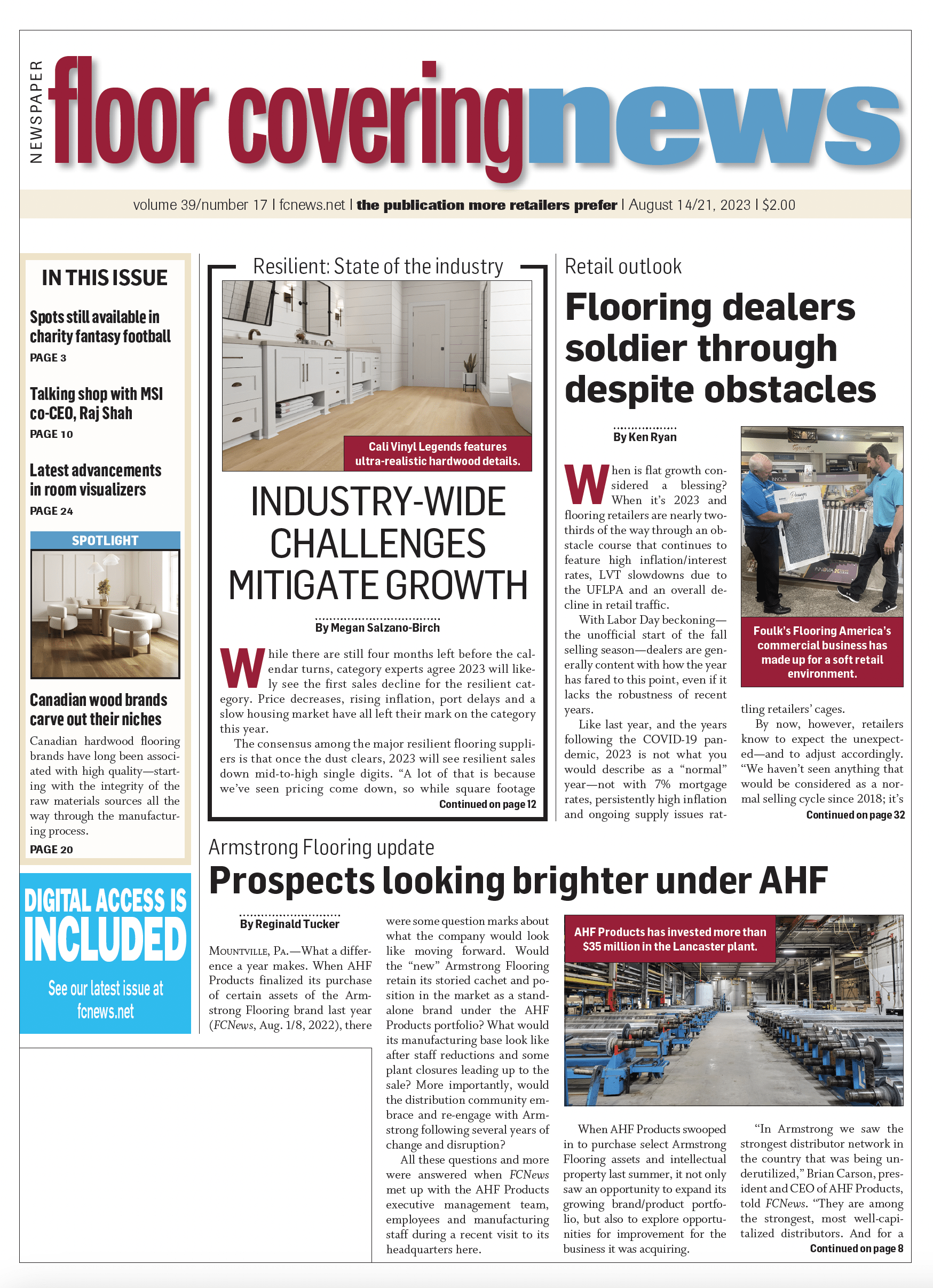Engineered floors have become very popular given their well-known performance attributes, overall stability and their ability to be installed on, above or below grade. Furthermore, there is no visible difference between engineered and solid floors after installation, and engineered floors tend be less expensive than some of their solid counterparts. However, whether you deal with solid or engineered wood floors, avoiding moisture problems is one of the primary tasks.

To avoid moisture problems, the moisture content of the floor planks—whether they are solid or engineered—should be within the permissible range starting from the time when they are manufactured, sold and delivered up to the point when they are installed and when the floor is in use.
A quality moisture meter is an indispensable tool needed for checking moisture conditions. However, even if you have a good moisture meter, you still need to know how to set the meter to get an accurate measurement for a specific floor. Checking the moisture content in solid wood flooring is relatively easy; the meters come with a selection of calibrations to use for different wood species. The big question is what calibration do you use to measure engineered floors?
Looking at individual engineered floor planks, there are differences in the thicknesses of the wear layer and the composition of the core. Each floor manufacturer has their own design; therein lays the problem when determining a setting for a moisture meter. We get phone calls all the time from flooring installers and inspectors about finding the right setting for a particular manufacturer’s floor.
One solution that works well is to send samples of the floors to Lignomat, and we can determine the correct setting after acclimating the floor at a known relative humidity. Then, the floor manufacturer can recommend a meter setting and will get accurate moisture measurements for all subsequent measurements after the floor has left the manufacturing facility.
A moisture meter calibrated through acclimation to a known relative humidity produces the same results as a meter calibrated with the oven test procedure for wood. To be accurate, the moisture content found this way is referred to as the “wood moisture equivalent” or WME. For example, the WME is 8.5% for a material acclimated in an environment of 45% relative humidity at a temperature of 70ºF. When an oven test is performed, a solid wood piece acclimated at 45% relative humidity has a moisture content of 8.5% (see EMC chart).
Both solid and engineered wood floors will absorb and release moisture if the humidity around them changes. Coming back to the example of 45% relative humidity and 8.3%—when that floor is exposed to a constant relative humidity of 60%, the floor will change to 11.9%. How fast that happens and how much of a dimensional change occurs depends on the floor planks.
Anybody who has access to floor pieces that are acclimated to a known relative humidity can find a calibration for a moisture meter. The acclimated floor planks could come from a climatized showroom or a storage area in the manufacturing facility. Here are some examples for temperatures of 70ºF:
- 25% stable 5.4%
- 35% stable 6.9%
- 45% stable 8.5%
- 55% stable 10.1%
- 65% stable 11.9%
- 75% stable 14.4%
The first step is to use the EMC chart to look up the relative humidity the floor has been acclimated in. The EMC chart lists the corresponding moisture content for every relative humidity between 5% and 95%. After determining the moisture content with the help of the EMC chart, set the pinless meter on the floor planks and change the setting upward from #50 until the measurements match the moisture content from the EMC chart.
If you have a pin meter, finding the setting of the meter is not so easy. Take the measurements and note the setting. Next, consult the meter manufacturer for the correct setting.
Flooring manufacturers, distributors and even the installers can use this method to determine how to measure engineered floors accurately. It would be most helpful if the floor manufacturers would recommend settings for moisture meters. (As mentioned above, Lignomat will test floor samples.) In the end, everybody working with that floor would get reliable, accurate and comparable moisture measurements.
Grete Heimerdinger is the technical advisor for the moisture meter division for Lignomat USA Ltd. She graduated from the Technical University in Stuttgart, Germany, with a teaching degree in Mathematics and Physics. For more information on moisture measurements and moisture problems, contact Lignomat at 800.227.2105 or email sales@lignomat.com.

